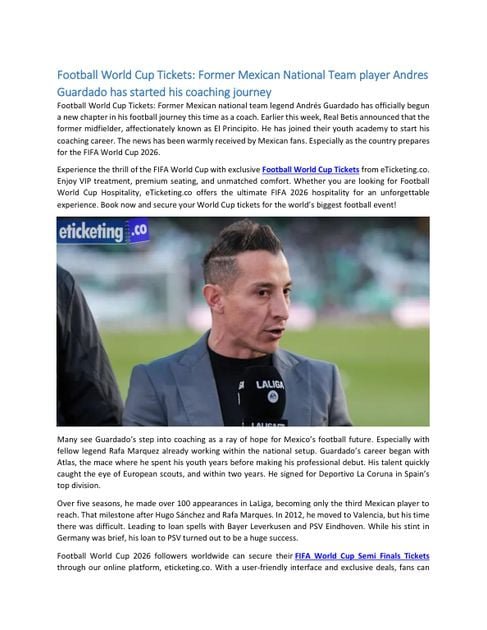Suggest an improvement
var gform;gform||(document.addEventListener(“gform_main_scripts_loaded”,function()gform.scriptsLoaded=!0),document.addEventListener(“gform/theme/scripts_loaded”,function()gform.themeScriptsLoaded=!0),window.addEventListener(“DOMContentLoaded”,function()gform.domLoaded=!0),gform=domLoaded:!1,scriptsLoaded:!1,themeScriptsLoaded:!1,isFormEditor:()=>”function”==typeof InitializeEditor,callIfLoaded:function(o),initializeOnLoaded:function(o)(document.addEventListener(“gform_main_scripts_loaded”,()=>gform.scriptsLoaded=!0,gform.callIfLoaded(o)),document.addEventListener(“gform/theme/scripts_loaded”,()=>gform.themeScriptsLoaded=!0,gform.callIfLoaded(o)),window.addEventListener(“DOMContentLoaded”,()=>gform.domLoaded=!0,gform.callIfLoaded(o))),hooks:action:,filter:,addAction:function(o,r,e,t)gform.addHook(“action”,o,r,e,t),addFilter:function(o,r,e,t)gform.addHook(“filter”,o,r,e,t),doAction:function(o)gform.doHook(“action”,o,arguments),applyFilters:function(o)return gform.doHook(“filter”,o,arguments),removeAction:function(o,r)gform.removeHook(“action”,o,r),removeFilter:function(o,r,e)gform.removeHook(“filter”,o,r,e),addHook:function(o,r,e,t,n)null==gform.hooks[o][r]&&(gform.hooks[o][r]=[]);var d=gform.hooks[o][r];null==n&&(n=r+”_”+d.length),gform.hooks[o][r].push(tag:n,callable:e,priority:t=null==t?10:t),doHook:function(r,o,e)var t;if(e=Array.prototype.slice.call(e,1),null!=gform.hooks[r][o]&&((o=gform.hooks[r][o]).sort(function(o,r)return o.priority-r.priority),o.forEach(function(o)”function”!=typeof(t=o.callable)&&(t=window[t]),”action”==r?t.apply(null,e):e[0]=t.apply(null,e))),”filter”==r)return e[0],removeHook:function(o,r,t,n)var e;null!=gform.hooks[o][r]&&(e=(e=gform.hooks[o][r]).filter(function(o,r,e)null!=t&&t!=o.priority)),gform.hooks[o][r]=e));

-
N/AFix spelling/grammar issueAdd or fix a linkAdd or fix an imageAdd more detailImprove the quality of the writingFix a factual error
-
You don’t need to tell us which article this feedback relates to, as we automatically capture that information for you.
-
This allows us to get in touch for more details if required.
-
Enter a five letter word in lowercase
#gform_wrapper_38 .gform_footer visibility: hidden; position: absolute; left: -100vw;
-
This field is for validation purposes and should be left unchanged.
/* = 0;if(!is_postback)return;var form_content = jQuery(this).contents().find(‘#gform_wrapper_38’);var is_confirmation = jQuery(this).contents().find(‘#gform_confirmation_wrapper_38’).length > 0;var is_redirect = contents.indexOf(‘gformRedirect(){‘) >= 0;var is_form = form_content.length > 0 && ! is_redirect && ! is_confirmation;var mt = parseInt(jQuery(‘html’).css(‘margin-top’), 10) + parseInt(jQuery(‘body’).css(‘margin-top’), 10) + 100;if(is_form)jQuery(‘#gform_wrapper_38’).html(form_content.html());if(form_content.hasClass(‘gform_validation_error’))jQuery(‘#gform_wrapper_38’).addClass(‘gform_validation_error’); else jQuery(‘#gform_wrapper_38’).removeClass(‘gform_validation_error’);setTimeout( function() /* delay the scroll by 50 milliseconds to fix a bug in chrome */ jQuery(document).scrollTop(jQuery(‘#gform_wrapper_38’).offset().top – mt); , 50 );if(window[‘gformInitDatepicker’]) gformInitDatepicker();if(window[‘gformInitPriceFields’]) gformInitPriceFields();var current_page = jQuery(‘#gform_source_page_number_38’).val();gformInitSpinner( 38, ‘https://geekymedics.com/wp-content/plugins/gravityforms/images/spinner.svg’, true );jQuery(document).trigger(‘gform_page_loaded’, [38, current_page]);window[‘gf_submitting_38’] = false;else if(!is_redirect)var confirmation_content = jQuery(this).contents().find(‘.GF_AJAX_POSTBACK’).html();if(!confirmation_content)confirmation_content = contents;jQuery(‘#gform_wrapper_38’).replaceWith(confirmation_content);jQuery(document).scrollTop(jQuery(‘#gf_38’).offset().top – mt);jQuery(document).trigger(‘gform_confirmation_loaded’, [38]);window[‘gf_submitting_38’] = false;wp.a11y.speak(jQuery(‘#gform_confirmation_message_38’).text());elsejQuery(‘#gform_38’).append(contents);if(window[‘gformRedirect’]) gformRedirect();jQuery(document).trigger(“gform_pre_post_render”, [ formId: “38”, currentPage: “current_page”, abort: function() this.preventDefault(); ]); if (event && event.defaultPrevented) return; const gformWrapperDiv = document.getElementById( “gform_wrapper_38” ); if ( gformWrapperDiv ) const visibilitySpan = document.createElement( “span” ); visibilitySpan.id = “gform_visibility_test_38”; gformWrapperDiv.insertAdjacentElement( “afterend”, visibilitySpan ); const visibilityTestDiv = document.getElementById( “gform_visibility_test_38” ); let postRenderFired = false; function triggerPostRender() if ( postRenderFired ) return; postRenderFired = true; gform.core.triggerPostRenderEvents( 38, current_page ); if ( visibilityTestDiv ) visibilityTestDiv.parentNode.removeChild( visibilityTestDiv ); function debounce( func, wait, immediate ) var timeout; return function() var context = this, args = arguments; var later = function() timeout = null; if ( !immediate ) func.apply( context, args ); ; var callNow = immediate && !timeout; clearTimeout( timeout ); timeout = setTimeout( later, wait ); if ( callNow ) func.apply( context, args ); ; const debouncedTriggerPostRender = debounce( function() triggerPostRender(); , 200 ); if ( visibilityTestDiv && visibilityTestDiv.offsetParent === null ) const observer = new MutationObserver( ( mutations ) => mutations.forEach( ( mutation ) => if ( mutation.type === ‘attributes’ && visibilityTestDiv.offsetParent !== null ) debouncedTriggerPostRender(); observer.disconnect(); ); ); observer.observe( document.body, attributes: true, childList: false, subtree: true, attributeFilter: [ ‘style’, ‘class’ ], ); else triggerPostRender(); } );} );
/* ]]> */

This article provides a step-by-step guide to explaining the triple assessment breast clinic for a breast lump in an OSCE setting, including information you will be expected to give and how to structure the consultation.
Opening the consultation
Wash your hands and don PPE if appropriate.
Introduce yourself to the patient including your name and role.
Confirm the patient’s name and date of birth.
Explain the reason for the consultation: “I understand that you’ve been referred to the clinic due to a breast/axillary lump*, is this correct?”
Due to the sensitive nature of the consultation, it’s important to establish a good rapport and open line of communication with the patient early in the consultation: “If you have any questions at any point, or if something is not clear, please feel free to interrupt and ask me.”
Make sure to check the patient’s understanding at regular intervals throughout the consultation and provide opportunities to ask questions (this is often referred to as ‘chunking and checking’).
Throughout the consultation, be receptive to the patient’s language and try only to use words and terminology they are comfortable with.
*Note that patients are not necessarily always referred for a lump – it could be nipple discharge, nipple/skin/contour change, or breast pain.
Ideas, concerns, and expectations
A key component of history taking involves exploring a patient’s ideas, concerns, and expectations (often referred to as ICE) to gain insight into the patient’s thoughts about the appointment, what they are worried about and what they expect from the consultation. When discussing concerns, do so in a sensitive and honest manner.
It can be challenging to use the ICE structure in a way that sounds natural in your consultation, but we have provided several examples for each of the three areas below.
Ideas
- “What do you already know about this clinic appointment?”
- “Do you know what the triple assessment clinic is?”
- “Do you know why the referral was made?”
Concerns
- “Is there anything worrying you about the appointment today?”
Expectations
- “What were you hoping we would cover today?”
- “What are you hoping to get out of this consultation?”
Patient history
Although the purpose of this station is to explain the breast triple assessment clinic, it is a good idea to gather a quick, focused history early in the consultation.
This should include exploring the patient’s presentation, associated key symptoms, and duration of symptoms: “Just so we are on the same page, could you tell me a bit about why you’ve been referred to the triple assessment clinic?”
Understanding the indication will allow you to tailor your explanation.
What is the breast triple assessment clinic?
Explain to the patient that the triple assessment clinic involves three diagnostic modalities: clinical examination, radiological imaging, and histological assessment.
“A breast triple assessment clinic is a ‘one-stop’ clinic that can involve up to three separate steps; not everyone referred will need all steps. These steps are a clinical history and breast examination, imaging of the breasts using X-rays or ultrasound, and a biopsy of the abnormal area. The order in which the tests are done will vary between clinics.”
Why have I been referred to a triple assessment clinic?
A breast triple assessment clinic is the gold standard for accurately detecting and diagnosing breast cancer or other breast abnormalities. Women and men can be referred to this one-stop clinic if they have signs or symptoms that meet the NICE urgent suspected cancer referral criteria.
The triple assessment aims to provide a quick and simple outpatient approach for early diagnosis and intervention.
Two types of breast referrals are part of the pathway:
1. Suspected cancer (including suspicion on a routine mammogram)
2. Symptomatic but not suspicious
Urgent suspected breast cancer referral
An urgent referral for breast cancer should be made for patients:1
- Aged 30 years and over with unexplained breast lump (with or without pain)
- Aged 50 years and over with any discharge, retraction or other changes of concern in one nipple only
An urgent referral for breast cancer should be considered for patients:
- With skin changes that suggest breast cancer
- Aged 30 years and over with an unexplained lump in the axilla
Non-urgent referral
A referral in this category is indicated if a patient is experiencing breast symptoms, but based on clinical assessment, the clinician does not strongly suspect they are caused by cancer. They are usually referred for a routine appointment rather than an urgent one.
A referral for symptomatic but not suspicious breast disease should be made for patients:2
- Female and aged less than 30 years with a lump
- Male and aged less than 50 with a sub-areolar lump
- With breast pain alone despite initial primary care management (e.g. 12 weeks of regular analgesia)
- With persistent asymmetrical nodularity or thickening
- With ongoing signs of infection or inflammation, despite antibiotics
- With unilateral eczematous skin of the areola or nipple despite a trial of topical treatment
“You have been referred as your GP wants to exclude breast cancer as a cause for your symptoms. The majority of patients referred to the breast clinic do not have cancer and have normal changes or a non-cancerous breast condition.”
What happens at the triple assessment clinic?
Clinical examination
Each patient is assessed by a doctor or clinical nurse specialist who will take a detailed history, including clinical symptoms, medical history, current and previous medications, and family history (particularly of breast, ovarian, pancreatic and prostate cancer). The clinician will then perform a full clinical examination of the breasts, including the axilla and lymph nodes, to identify abnormal areas. The clinical examination will be performed in the presence of a chaperone.
“During your clinical assessment, you will be asked questions about your symptoms, your medical history, risk factors for breast cancer and family history by a specialist nurse or doctor. An examination of your breasts, nipples, armpits and lymph nodes in the neck and above the collarbone will then be performed in the presence of a chaperone. You will be required to remove any clothing from the waist upwards during this part.”
Imaging
The imaging modality will primarily depend upon the patient’s age. Younger women (<40 years) have dense breast tissue, so the use of mammography is limited; in these patients, ultrasound is the best first form of imaging. Older patients (>40 years) will undergo mammography +/- ultrasound depending on the clinical findings and if an area requires further evaluation.
“As part of your assessment, you may be offered imaging either in the form of a mammogram, an ultrasound scan or both, depending on your age and clinical assessment. A mammogram is a low-dose X-ray of your breasts, which can often detect early breast cancer before it can be felt. An ultrasound is a jelly scan that uses sound waves to generate an image of your breast; it can also see the area of the breast closest to the chest wall that may be difficult to see on a mammogram.”
Histology
If any abnormality is detected in the examination or imaging, then biopsies are taken. For breast or axillary lumps, this is generally in the form of a core biopsy, however, in certain patients or abnormalities, fine needle aspiration cytology (FNAC) (e.g. for breast or axillary lumps that cannot be core biopsied) or punch biopsy (e.g. for nipple changes) can be used. As with all procedures, there are associated complications, the most common being pain, bleeding causing haematoma, infection, bruising/swelling and insufficient sample.
“Depending on the results of your breast examination and imaging, you may be offered a biopsy of the abnormal area. The clinician will decide the most appropriate form of biopsy to perform. The most common type is a core biopsy, which involves using local anaesthetic to numb the area and then using a mammogram or ultrasound to locate the area and remove a small sample of tissue using a needle. The tissue is then sent to the lab for further analysis under a microscope. Some common risks of this procedure are pain, bleeding, bruising, swelling and infection. Additionally, there is a risk of obtaining an inadequate sample, which may result in the need to repeat the biopsy.”
UK 5-point breast imaging and reporting data system (UK BI-RADS)
This scale is used to classify the suspicion of malignancy at each stage of the triple assessment. The scale is predominantly used to communicate with the multidisciplinary team.
Table 1. The 5-point scale for grading each assessment 3-4
| Clinical examination | Imaging | Histology | |
| E1: normal | M1: normal | U1: normal | B1: normal |
| E2: benign | M2: benign | U2: benign | B2: benign |
| E3: indeterminate/likely benign | M3: indeterminate/likely benign | U3: indeterminate/likely benign | B3: indeterminate/likely benign |
| E4: suspicious for malignancy | M4: suspicious for malignancy | U4: suspicious for malignancy | B4: suspicious for malignancy |
| E5: malignant | M5: malignant | U5: malignant | B5: malignant |
E = examination; M = mammogram; U = ultrasound; B = biopsy.
What happens after the triple assessment clinic?
Results
The primary advantage of the triple assessment is that all required tests are conducted during a single appointment, allowing quicker access to results. In addition, it allows for all information to be available for multi-disciplinary team (MDT) meetings.
“Typically, if the results from mammography, ultrasound, and clinical examination are normal, they will be discussed with you right away. However, if a biopsy is performed, you may need to wait up to 2 weeks for the lab to assess the sample under a microscope. A follow-up appointment will then be made to discuss your results once available.”
Multidisciplinary team meeting
All cases involving histological assessment will be reviewed at an MDT meeting. A senior clinician will evaluate cases without histological assessment to ensure that clinical assessment and imaging are concordant. Ideally, the assessments should align in their conclusions about the presence or absence of cancer. If discordance (e.g. the clinical exam is suspicious, but imaging and biopsy are not), further evaluation or additional imaging may be warranted.
“If there are any concerns about the diagnosis during the clinic or if a biopsy is taken, your case will be discussed at a multidisciplinary team meeting. This is a weekly meeting that occurs with a group of experts specialising in the diagnosis, treatment and management of patients with breast conditions. The team includes breast surgeons, breast specialist nurses, radiologists, radiographers, pathologists, oncologists and other healthcare professionals.”
“The team will review all the information and test results and agree on a plan for the next steps. That might include discharging you as there are no concerns, suggesting more investigations, or diagnosing a breast condition.”
Closing the consultation
Close the consultation by summarising what you have discussed. This allows you to emphasise the key points of the consultation.
Ask the patient if they have any questions or concerns that have not been addressed.
Finally, thank the patient for their time and offer them a leaflet summarising the key information.
Dispose of PPE appropriately and wash your hands
Reviewer
Ms Esha Khanderia
Oncoplastic Breast Surgery Clinical Fellow
Editor
Dr Jamie Scriven
References
- NICE. Breast cancer – recognition and referral. 2024. Available from: [LINK].
- HWE Clinical Guidance. Pan-London Suspected Breast Cancer Referral Guide. 2024. Available from: [LINK].
- The Royal College of Pathologists. Guidelines for non-operative diagnostic procedures and reporting in breast cancer screening. 2021. Available from: [LINK].
- The Royal College of Radiologists. Guidance on screening and symptomatic breast imaging. Fourth edition. 2019. Available from: [LINK].
Discover more from Bibliobazar Digi Books
Subscribe to get the latest posts sent to your email.




